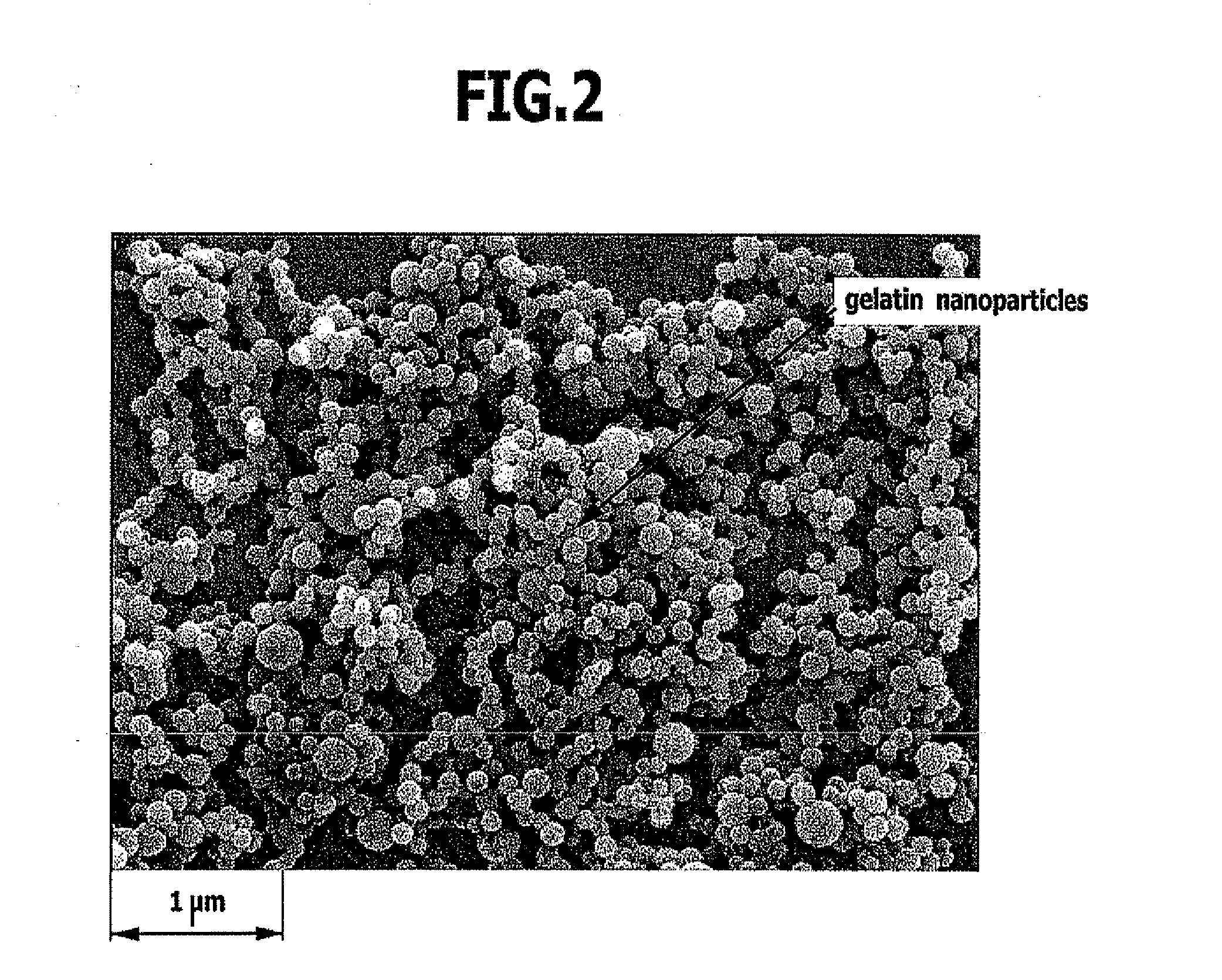Nanoparticles and method for the production thereof
a technology of nanoparticles and nanoparticles, applied in the field of nanoparticles, can solve the problems of poor or lacking biodegradability, and not lead to satisfactory results, and achieve the effect of facilitating the production of nanoparticles and ensuring the formation of stable nanoparticles
- Summary
- Abstract
- Description
- Claims
- Application Information
AI Technical Summary
Benefits of technology
Problems solved by technology
Method used
Image
Examples
example 1
[0059] This example describes the production of cross-linked nanoparticles consisting of the gelatin, the GPC of which is illustrated in FIG. 1B (with a proportion of gelatin with a molecular weight of less than 65 kDa of approximately 15% by weight).
[0060] 300 mg of the said gelatin are dissolved in water at 50° C. Following the adjustment of the pH value to 2.5 with hydrogen chloride, the de-solvation of the gelatin is carried out by way of the drop by drop addition of 45 ml of acetone. After stirring for 10 minutes, 40 μl of an 8% aqueous glutaric aldehyde solution are added and, subsequently, stirred for a further 30 minutes. The nanoparticles cross-linked in this way are separated from the solution due to a 10 minute centrifugation at 10,000 g and cleansed by a three time redispersion in acetone / water (30 / 70). Following the last redispersion, the acetone is evaporated at 50° C.
[0061] This simple process leads without additional separating steps to nanoparticles according to t...
example 2
[0063] Cross-linked nanoparticles are produced as described in Example 1, wherein a pigskin gelatin with a bloom value of 270 is used as starting material, its proportion of gelatin with a molecular weight of less than 65 kDa being approximately 19% by weight.
[0064] An average particle diameter of approximately 173 nm at a polydispersity index of approximately 0.08 was ascertained for the nanoparticles according to the invention immediately obtained with the PCS method described above. The size distribution was comparable to the nanoparticles produced according to Example 1.
PUM
| Property | Measurement | Unit |
|---|---|---|
| Percent by mass | aaaaa | aaaaa |
| Percent by mass | aaaaa | aaaaa |
| Percent by mass | aaaaa | aaaaa |
Abstract
Description
Claims
Application Information
 Login to View More
Login to View More - R&D
- Intellectual Property
- Life Sciences
- Materials
- Tech Scout
- Unparalleled Data Quality
- Higher Quality Content
- 60% Fewer Hallucinations
Browse by: Latest US Patents, China's latest patents, Technical Efficacy Thesaurus, Application Domain, Technology Topic, Popular Technical Reports.
© 2025 PatSnap. All rights reserved.Legal|Privacy policy|Modern Slavery Act Transparency Statement|Sitemap|About US| Contact US: help@patsnap.com



